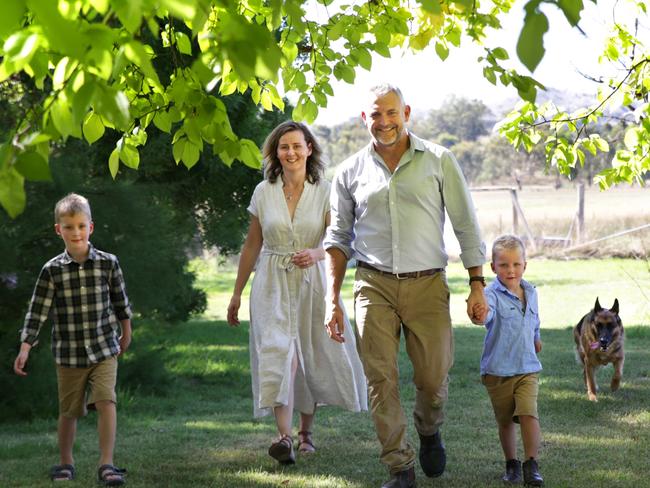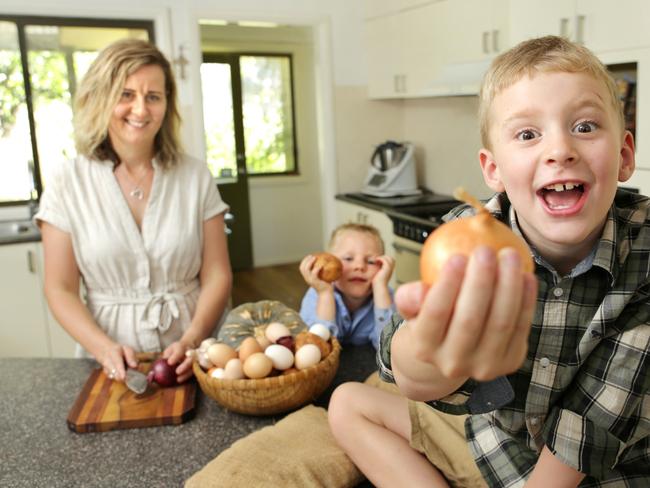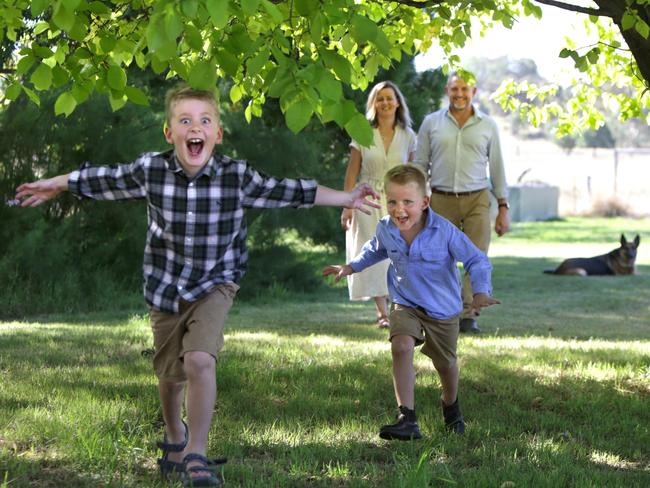Treechange, seachange: cost of living pressures causing one in five Aussies to consider move to regions
General stress, anxiety and cost of living pressures are leading many Australians to consider a life-changing move.

Home
Don't miss out on the headlines from Home. Followed categories will be added to My News.
Call it region fever, but rural Australia’s place in the sun continues shining post-pandemic. And while inflation fatigue and housing prices keep regional opportunities top of mind for wistful city workers, those already living in bush and coastal communities are experiencing a host of major changes too.
With consideration initially driven by Covid, research released in 2021 by the Regional Australia Institute (RAI) showed one in five residents in major Australian capitals were weighing up a move to the regions. More recently, last August’s SEC Newgate’s Mood of the Bush Report confirmed RAI’s data – at least in NSW – showing more than one million Sydneysiders (around one in five) would “definitely” or “probably” consider moving to a regional or rural area inside two years.

Now the trend endures, with regional opportunities for work and life presenting an alluring alternative to specific city-based miseries. RAI chief executive Liz Ritchie says that migration to rural Australia is still 15 per cent above pre-Covid numbers, because more people want to reclaim time, space and connection to natural environments.
“The appetite is still there to move out of our cities,” Ritchie says.
“The main reasons for this include reducing general stress and anxiety and the cost of living.”
But what of those who are already there – what’s it like with gumboots on the ground?
OUT OF THE GATES
Sally-Anne Kearns, husband Ray and boys Alex, 6, and Ashton, 4, quit Melbourne for NSW’s bucolic Mudgee region in 2019, selling their home the following January just before Covid struck.
Demanding corporate jobs were delivering great income but no life.
“(Ray’s) commute in Melbourne … would take an hour and a half each way, each day,” Sally-Anne Kearns says.
“Incredibly paid jobs and yet five of his friends had suicided that year who were all earning half a million bucks a year.

“I looked at my husband and I said, ‘How much longer have you got doing this, at this pace?’ And he said, ‘Maybe two years’ and I said, ‘Forget it, I’m not going to wake up next to my husband who’s had a heart attack because he’s so stressed. There was no balance, there was no life at the end of the stile, it was just all work.”
They had never farmed before and rented before buying.
Ray now works at council doing senior infrastructure and planning projects, where Kearns says there are jobs.
“They’re desperately looking for people to move here to fill these executive-style jobs but I don’t think people recognise the benefit of living here. It’s extraordinary,” she says.
PRESSURE POINTS
While she happily raves about the move, Kearns is blunt about the minuses.
“You don’t earn as much money here,” she says.
“You simply can’t. Unless you want … a mining career, which goes against those lifestyle values.”
Insufficient childcare is another factor that can make the transition difficult for young working families.
“There is not as much after-school care available in this region as you would get in the city, so you have to be mindful of that,” Kearns says.
Undeterred, Kearns has learned to find other mechanisms that work for her family. One word keeps cropping up: community.
“You could team up with one of the other families and swap duties,” she says.
“I think the thing that really stands true to me is how much of a community we have and how we do all work together. Post bushfires, post flooding … the community really does get in and does really help.”
As a tourism hub, Mudgee has also experienced its share of long-stay housing shortages. “There is definitely demand for housing, definitely the lower end particularly for young couples. There’s not a lot of apartment-style dwellings – usually that’s where young families make a start.”

OPPORTUNITY KNOCKS
Kearns formerly ran a Sydney commercial property business with 35 employees, but these days, it’s all about the side-hustle – a hip, relatively new concept among city-slickers, but standard practice in rural communities for centuries.
Reskilling in nutrition to address her poor health from corporate career stress, she now runs a clinic out of the farm, along with an organic co-op in Mudgee.
“That’s grown into something pretty cool. I never thought I’d be that guy – but it connects to community,” she says.
“I also still hold a real estate licence and I am a buyer’s agent locally for the Ari Agency.”
Insufficient housing and other infrastructure gaps can be real issues for permanent relocation for some, but there’s certainly pathways for those open to a more transient experience. Skilled tradespeople, for example, are in constant demand.
“They are booked out solid for four weeks up to a year if you’re a builder. There’s high paid jobs here in the mines or as a driver … it definitely makes sense for a young family while you’re building up – you’re still buying a property in Mudgee town for under $700,000, which is still … pretty affordable.”

MAKING IT WORK
Mudgee’s event calendar has taken on a life of its own now the region’s food, wine and hospitality offering is Australia’s worst kept secret, but Kearns remains most bewitched by the majestic surrounds.
“You can’t afford to do (Mudgee’s city-style experiences) as frequently because you’re taking the pay cut, but I’ve travelled all around the world and my breath is still taken away by Mudgee’s beauty,” she says.
“I’ve moved over 40 times in my life and I feel like this is finally home for me, which is a pretty powerful feeling.
“No one can ever give us that time back with our children. To have my husband back 15 hours a week and have my children see their father, that’s actually invaluable.”
Originally published as Treechange, seachange: cost of living pressures causing one in five Aussies to consider move to regions




